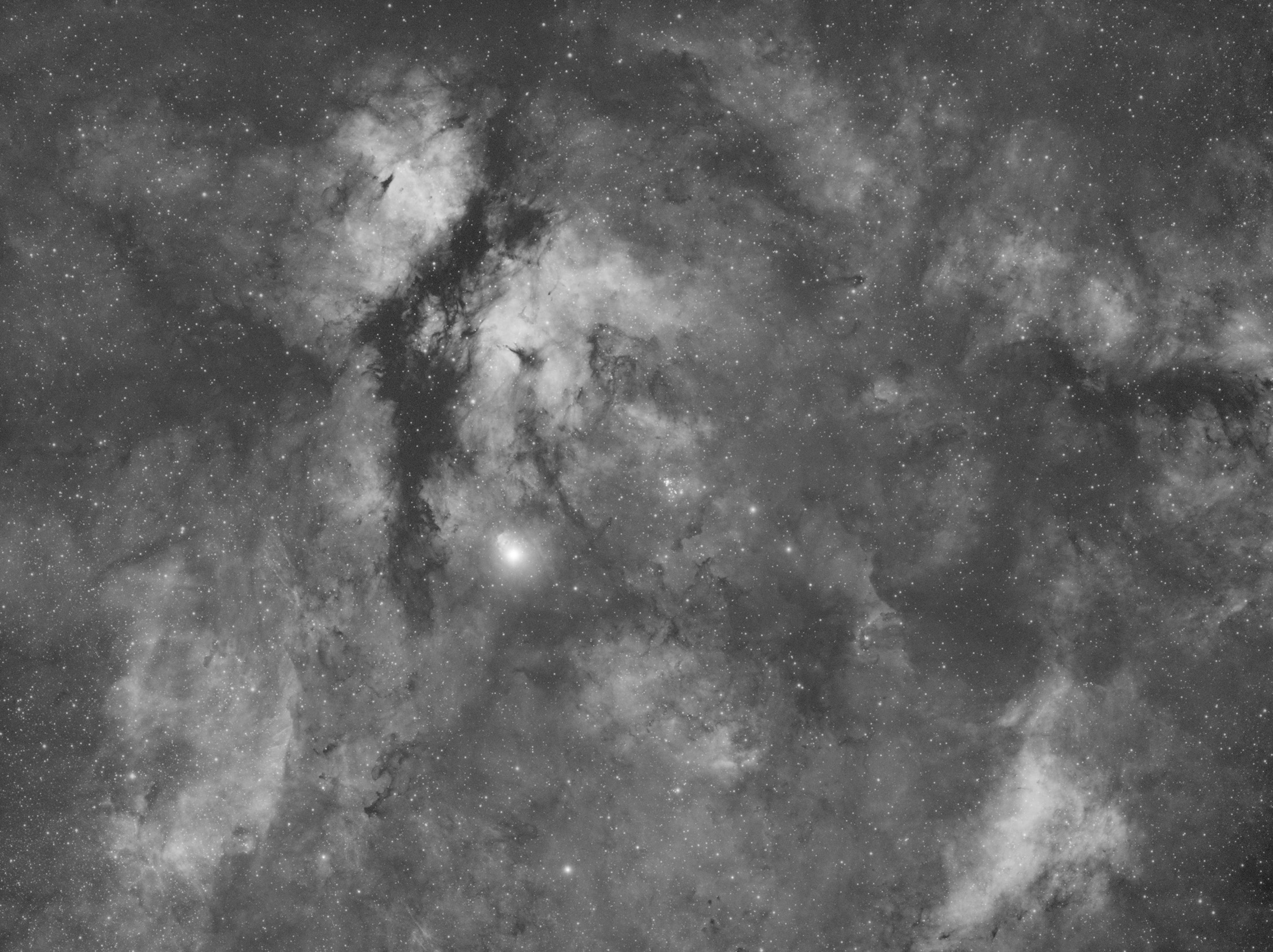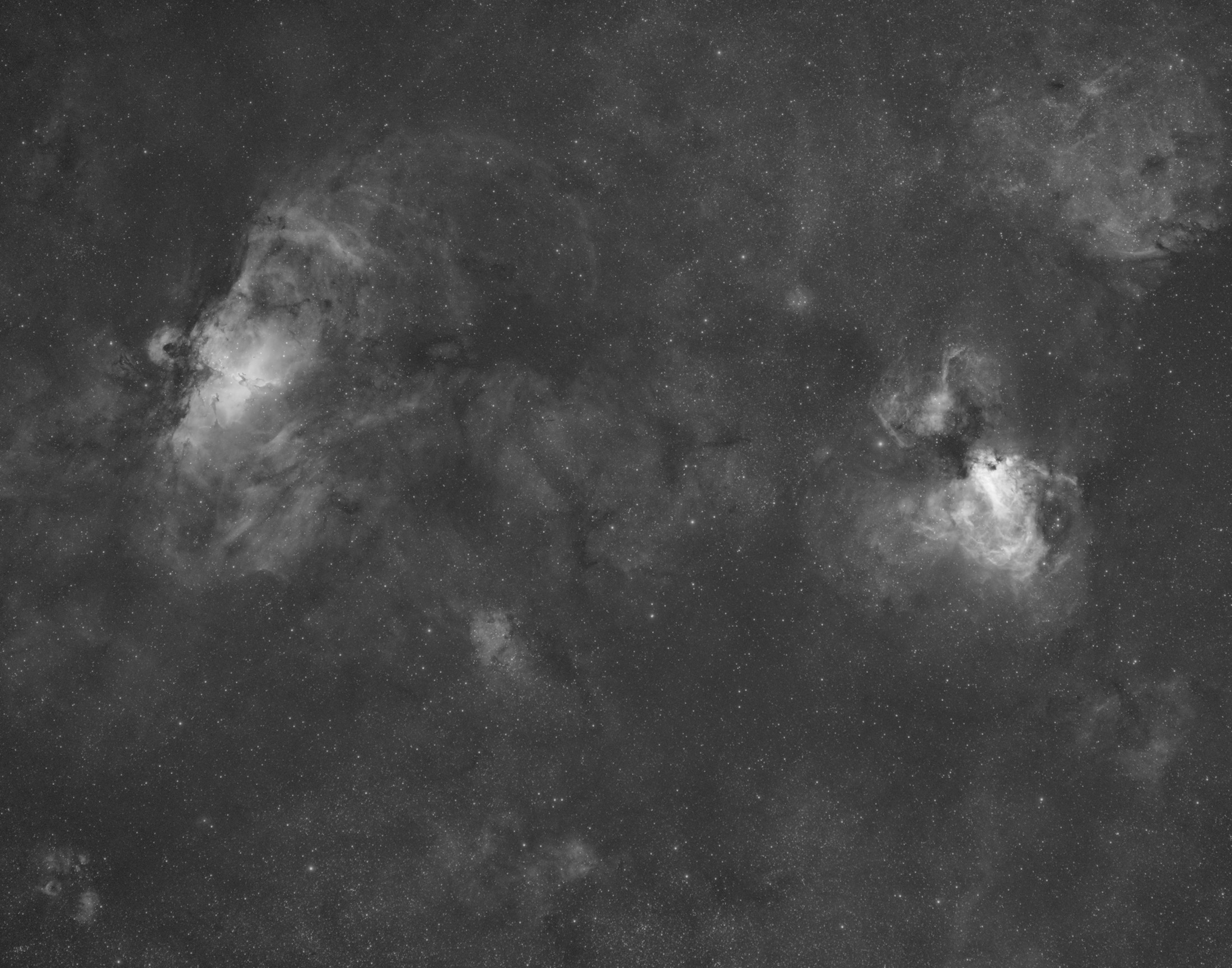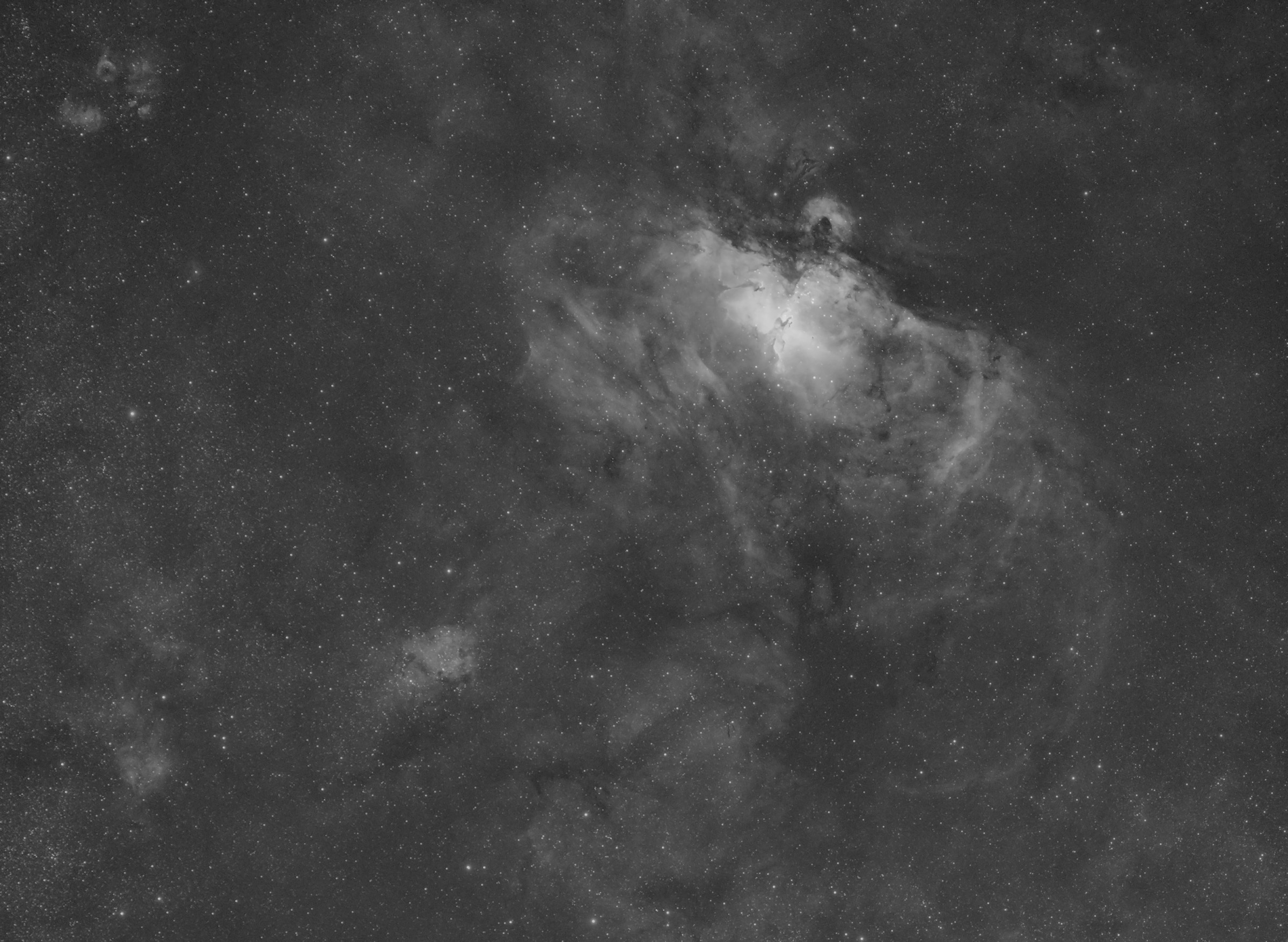It was a night of dodging clouds and narrowband imaging...
In two parts: I spent the first half of the night on IC 1318, the "Sadr Region" at the heart of the constellation Cygnus. IC 1318 is a vast and energetic emission nebula surrounding one of the brightest stars in the night sky, Sadr (γ Cygni). Click for the full sized image.
And then shifted the whole operation to the south to the constellation Serpens, just out from the Milky Way core, capturing Messier 16 (Eagle Nebula, NGC 6611), the bright nebula on the left side, and M17 (Swan Nebula, NGC 6618) on right.
Notes: William Optics SpaceCat 51 Apo Refractor 250mm f/4.9, Astronomik 6nm Ha filter, ZWO ASI1600MM-Pro monochrome camera, Sky-Watcher EQ6-R Pro equatorial mount.
Posted June 6, 2022
Astro Session: June 16, 2018
It was narrowband time last night in the backyard. I took a couple hours of hydrogen-alpha (Ha) sub-exposures of M17, the Swan Nebula in the constellation Sagittarius. M17 is about 5,500 light-years away. It's also called the Omega Nebula, Checkmark Nebula, and sometimes the Horseshoe Nebula, but all I see is a swan--with a black beak, neck arched forward, and wings outstretched. The bright region in the middle is the swan's chest. I started to take a few OIII frames on the 16th, but by that time M17 was heading back toward the southern horizon, and so I jumped over to the "Cygnus Wall" in NGC 7000 (North America Nebula). I captured several hours of OIII data there, amazing stuff, and I've already posted the finished image in Ha and OIII. I came back to M17 on the 21st, and took another 40 x 300 second subs in OIII. (M17 info: Ha 16 x 300 second + 82 x 120 second exposures + 20 dark frames, OIII 40 x 300 second exposures + 20 dark frames, stacked in DSS, William Optics ZS61, Atik 414EX mono CCD, 7nm Optolong 2" Ha filter, 8.5nm Baader 2" OIII filter, CEM25P EQ Mount, QHY5III178 guide cam with the Orion TOAG, https://www.astrobin.com/352947).
UPDATE: The Swan Nebula (M17) bi-color narrowband with the WilliamOptics ZS61 and the Atik 414EX. I shot the hydrogen-alpha frames on June 16th (16 x 300 second exposures + 82 x 120 second exposures) and I came back on the 21st to shoot 40 x 300 second exposures in oxygen-3. I decided not to shoot sulphur-2 frames based on the wonderful result with bi-color for my Cygnus Wall image set (6.8 hours of Ha + OIII). For the Swan Nebula (this post) and Cygnus Wall (last post) images I used the Hydrogen-alpha/Oxygen-3 bi-color process developed in an article by Travis Rector, et. al. in The Astronomical Journal here: https://doi.org/10.1086/510117, and detailed here: https://www.starrywonders.com/bicolortechniquenew.html




